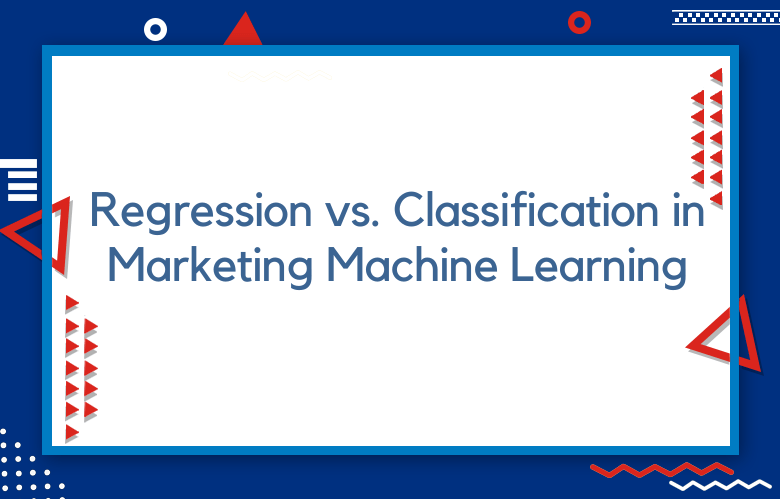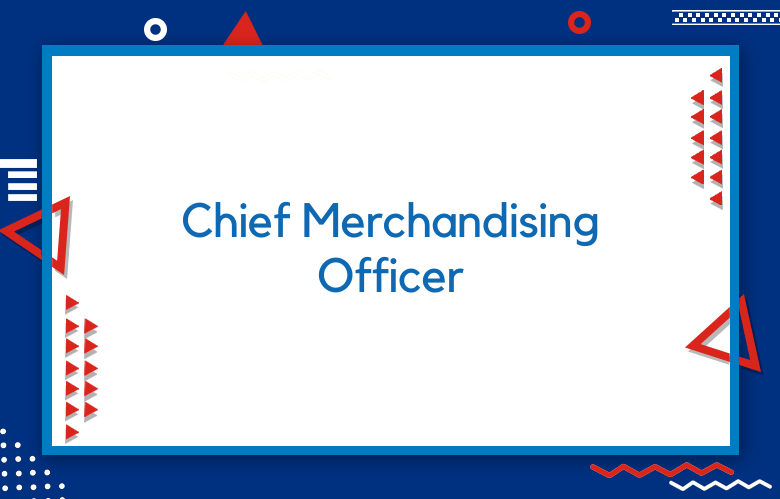Regression vs. Classification in Marketing Machine Learning

As a marketer, you may be familiar with regression and classification when discussing linear models; however, did you know that these same terms are used when talking about machine learning?
We will discuss the differences between regression and classification in marketing machine learning to understand better how to utilize these methods in your marketing efforts.
In machine learning, there are two main models: regression and classification.
Both types of models can be used for marketing purposes.
However, it is essential to notice the difference between the two to choose the suitable model for your needs.
In machine learning, there are two main problems: regression and classification. Both are supervised learning tasks, where you have a training dataset with labels (or targets) already assigned. The difference is in the type of label:
Regression: A continuous value, such as “How many ice cream cones will I sell tomorrow?”
Classification: A discrete value, such as “Is this a picture of a hot dog or not?”
We’ll focus on classification and how it can be used in marketing. We’ll also review some of the benefits and drawbacks of using machine learning for marketing tasks.
What is Regression?
Regression is a type of predictive modeling used to predict numeric values. For example, you could use regression to expect how much a customer will spend on your website in a month. Regression models are trained using historical data, and the predictions made by the model are based on patterns found in that data.
What is Classification?
Classification is a type of predictive modeling used to predict categorical values. For example, you could use classification to indicate whether a customer will purchase or not a product on your website. Classification models are also trained using historical data, but the predictions made by the model are based on probabilities rather than patterns.
Which one should You Use?
Now that you know the difference between regression and classification, you might wonder which one you should use for your marketing goals. The answer depends on what type of prediction you’re trying to make.
If you’re trying to predict a numeric value, such as how much a customer will spend, then you should use regression. If you’re trying to predict an absolute bargain, such as whether or not a customer will purchase a product, then you should use classification.
Regression Models
Regression models predict continuous values, such as price or probability. They are the most common machine learning model and are typically used for sales forecasting, risk management, and fraud detection.
Because regression models can handle multiple input variables, they are well-suited for marketing applications where many factors influence the outcome (e.g., customer segmentation and website optimization).
Classification Models
Classification models predict discrete values, such as yes/no or purchase/non-purchase. They are less common than regression models but can be helpful for target marketing, lead scoring, and fraud prevention. Classification models work best when there are a limited number of possible outcomes and when the data is “clean” (e.g., no missing values or outliers).
Regression vs. Classification in Marketing Machine Learning
Regression and classification are both types of supervised learning, machine learning that uses historical data to predict future outcomes. The two main types of supervised learning are regression and classification. So, what is the difference between regression and classification?
Regression is a supervised learning type used to predict continuous values, such as prices or demand. On the other hand, classification is a type of supervised learning used to predict discrete values, such as whether or not a customer will purchase a product.
Let’s look at an example of the difference between regression and classification. Imagine you are a marketing analyst for a company selling shoes online. You have been tasked with predicting the demand for the new line of shoes that will be released next month. To do this, you must utilize regression since you expect a constant value (order).
On the other hand, you are tasked with predicting whether or not customers will click on an email about the new line of shoes. In this case, you will need to utilize classification since you are predicting a discrete value (whether or not the customer will click on the email).
Regression models are used to predict a continuous outcome variable. For example, you could use a regression model to predict customer lifetime value or churn rate.
In contrast, classification models are used to indicate a discrete outcome variable. For example, you could use a classification model to segment customers into groups or target a specific group of customers with a direct mail campaign.
Both regression and classification models can be used for marketing purposes. However, it is essential to understand the difference between the two to choose the suitable model for your needs.
It would help if you used a regression model to predict a continuous outcome variable, such as customer lifetime value. If you want to segment customers into groups or target a specific group of customers with a direct mail campaign, then you should use a classification model.
Classification algorithms use when the predicted variable is categorical, meaning can place into discrete groups. For example, a classification algorithm could indicate whether a customer will purchase based on their demographic information (age, gender, location, etc.).
Regression algorithms are used when the predicted variable is continuous, meaning it can take on any value within a range. For example, a regression algorithm could be used to predict how much a customer will spend on their next purchase.
Marketers can use both classification and regression algorithms to make predictions about customers. However, it’s essential to understand the difference between the two types of algorithms to choose the right one for your needs.
If you’re trying to predict a categorical outcome (such as whether or not a customer will make a purchase), then you should use a classification algorithm. If you’re trying to predict a continuous outcome (such as how much money a customer will spend), then you should use a regression algorithm.
Regarding marketing machine learning, regression is used for predictive analytics, while classification is used for targeted marketing. Predictive analytics is concerned with forecasting future outcomes, such as the likelihood of purchasing a product or the Churn rate.
Targeted marketing is concerned with identifying which consumers are most likely to respond positively to a given marketing campaign.
Both regression and classification can be used for either descriptive or predictive modeling. Descriptive modeling summarizes past events, while predictive modeling uses historical data to predict future events.
For example, you could use regression to create a predictive model that forecasts future sales based on past sales data. Or you could use classification to create a descriptive model that segments customers based on their past purchasing behavior.
One way that classification can use in marketing is to segment customers into groups. For example, you have a dataset of customer attributes like age, income, location, etc. You can use a machine learning algorithm to cluster those customers into groups based on their similarities. It is often called customer segmentation.
Once you have your customer segments, you can start targeting your marketing campaigns specifically for those groups.
For example, if you have a group of young customers who live in urban areas and another group of older customers who live in rural areas, you would create different campaigns for each group that are tailored to their needs and interests. Customer segmentation can help you make more effective marketing campaigns that result in better.
Conclusion
In conclusion, regression and classification are both types of supervised learning that can be utilized in marketing machine learning.
Regression is used to predict continuous values, while classification is used to predict discrete values.
As a marketer, it is essential to understand the difference between these two types of machine learning to utilize them in your marketing efforts properly.
When using machine learning for marketing, it is essential to understand the difference between regression and classification.
Regression deals with continuous values, while classification deals with discrete values.
We can use these two algorithms together to create a more accurate model.
Contact us for machine learning marketing consulting if you are interested in using machine learning for your marketing campaigns. We can help you determine which algorithm would be best for your needs and implement it into your campaign.
Call: +91 9848321284
Email: [email protected]



